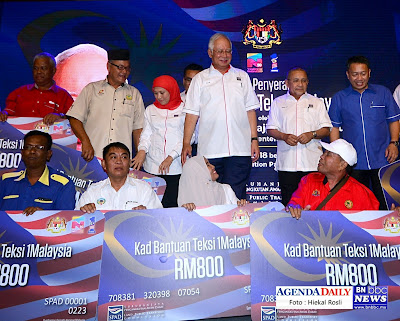Malaysia on Track to Expand Rail Mileage by 65% as Key Projects Unfold by 2027.
Rail is earmarked as the backbone of Malaysia’s land public transport network, and under the 2013 National Land Public Transport Masterplan (NLPTM), the Government seeks to boost the carrying capacity of rail through a three-pronged strategy involving the construction of new lines, procurement of additional trains for existing lines, and upgrading the signaling system to increase service frequency.
The determination to make rail as the artery for the movement of people has borne tangible results. Over the past 7 years, the Government has significantly increased the urban rail network from 279km to 369km. Over the next few years, the urban rail network is expected to grow to 505km with the completion of LRT3 (by 2020), MRT2 or the Sungai Buloh-Serdang-Putrajaya line (by 2022) and MRT3 (Circle Line) in the future.
As a result of several other key infra-rakyat rail projects which will continue to unfold by 2027, including the 350km Kuala Lumpur-Singapore High Speed Rail project, the 4-km Johor Bharu-Woodlands (North) Rapid Transit System, the 700km East Coast Rail Link and other urban rail lines, rail mileage across the nation will come close to 3,000km, 65% more than what it is now. While major investments are being poured into rail, improving first-and–last mile connectivity to make travel seamless for commuters, remains a priority.
Examples include the Interim Stage Bus Support Fund (ISBSF) introduced in 2012, which provides Government funding to sustain operations of social routes for the benefit of more than 330,000 passengers per day.
Meant as support for ailing stage bus companies, ISBSF will be replaced by the myBAS initiative in capital cities under the Stage Bus Services Transformation Programme (SBST). The Government has invested RM143 million for the operationalisation of myBAS services by SPAD in Kangar since August 2015, in Seremban since January 2016, in Ipoh since June 2016. To-date, myBAS has recorded more than 8.4 million passengers.
To ensure that the taxi industry remains sustainable, the Government unveiled the Taxi Industry Transformation Programme (TITP) which saw the approval of the amendments to the Land Public Transport Act 2010 by Parliament.
We are working towards a fair level playing field for taxi drivers and the e-hailing industry while assuring that passenger safety continues to be prioritised. On a related matter, thousands of Malaysians visited the two-day land transport exhibition held at the Kuala Lumpur Convention Centre which saw the Honourable Prime Minister of Malaysia deliver a keynote address.
The SPAD-organised event saw the participation of experts, thought leaders and luminaries from China, South Korea, Japan, Germany, United States and the United Kingdom, just to name a few.








Comments
Post a Comment